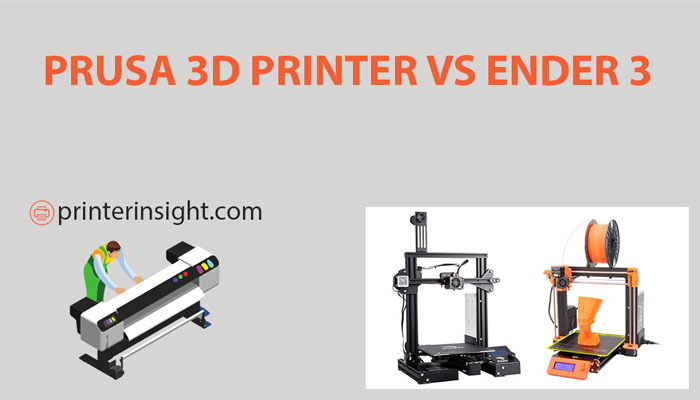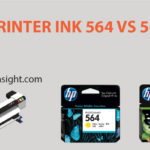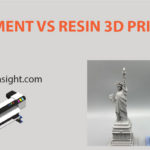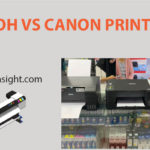Looking for a dependable printer between Prusa 3D Printer Vs Ender 3?
It’s a little bit tough. Both 3D printing options offer distinctive features which can upgrade your printing experience. So, what should be your choice?
Don’t worry. We are here with a thorough comparison between these two 3D printers. We hope this article will enable you to make the right decision. Let’s start.
First, you need to have a deep understanding of these 3D printing options. Then, it will be easier to identify the distinguishing factors between them.
Ender 3 3D Printer
Ender 3 is an effective 3D printer that operates through FDM (Fused Deposition Modelling) technology. Its USP (Unique Selling Point) is cost-efficiency. This printer is an excellent choice for low-budget projects and beginners.
Usually, Ender 3 printers consist of V-slot Aluminium and roller bearings. Besides, their adhesive features are pretty impressive.

Ender 3 Key Features
- It Offers a 24-V PSU that improves the speed of bed heating.
- The maximum layer resolution is 0.1mm.
- It incorporates nuts which are designed through an ergonomic process.
- Bed levelling is straightforward.
- It provides print resume options if you face sudden power loss.
- Construction materials, like metal parts, are top-notch.
- Print precision is 0.1mm.
Here, some noteworthy features of Ender 3 3D printers include-
Price
The cost performance of Ender 3 is beneficial for beginners. This is the most affordable 3D printing option that deals with small-scale printings regularly. Its average price is $150-S260, which can vary due to models, specifications, etc.
Besides, its accessibility is good enough for consumers.
Check Amazon to know about the price and special features of Ender 3 printers.
Setup
Ender 3 3D printer setup is time-consuming but painless. Why don’t you think positively?
You can get a clear idea about these machines while setting them up.
Size
Usually, Ender 3 is a desktop printer. Its average size is 440410465 mm, that is highly effective for small offices. Besides, the compact designs and required area make it preferable to other 3D printers in many cases.
Print quality
Ender 3 offers impressive print quality in the case of 3D printing. The print resolution of this printer varies from 240-300 DPI. Its printing becomes smooth if you use Nylon filament.
Open-source software
Crealty Ender 3’s system is commendable as an open-source printer. It offers you an excellent opportunity to benefit from any of Crealty Ender’s updates. Besides, you can include your ideas that can upgrade this software.
Connectivity
This printer shows reliable connectivity with different mediums, like USB, SD card, etc. Besides, you can use Ender 3 3D printers with versatile operating systems.
Base
The printer base is not flat in the case of Crealty Ender 3 3D printers. This feature is problematic for the users.
They need to use a wedge below the uneven portion during operation. Otherwise, the printing arms and extruders move frequently. It results in making wobbles by the printer base.
Print Speed
Ender 3 can deliver almost 60 mm/s print speed without compromising the print quality. This feature can’t impress the regular printer users in most cases, isn’t it?
Calibration Process
Its calibration is not user-friendly. You need to calibrate the heater bed manually before printing. That’s an irritating task for the users.
Bed adhesion
The BuildTak-ish grip finish of Crealty Ender 3 printers requires external adhesion materials to deliver top-class printing. It takes time to sort out the bed adhesion issue.
Ender 3 Printer’s Pros And Cons
Pros
- Highly economical
- Stable design
- Smooth operations
- Easily upgradable
- Open source features
Cons
- Bed levelling lacks reliability due to manual processes
- Low print speed
- No metal head-end
- Levelling is slightly tricky because of having uneven base
- Adhesion in hotbed is not up to the mark
- Produce toxic off-gases
Best Ender 3 Printers
- Crealty Ender 3 Pro
- Ender 3 V-2
Prusa 3D Printer Review
Prusa 3D is an outstanding 3D printer that offers high print speed, along with ensuring high quality of printing. Besides, its upfront cost is a little bit high.
But it’s easy operation and hassle-free service in high-volume projects make it preferable to beginner and professional printer users.
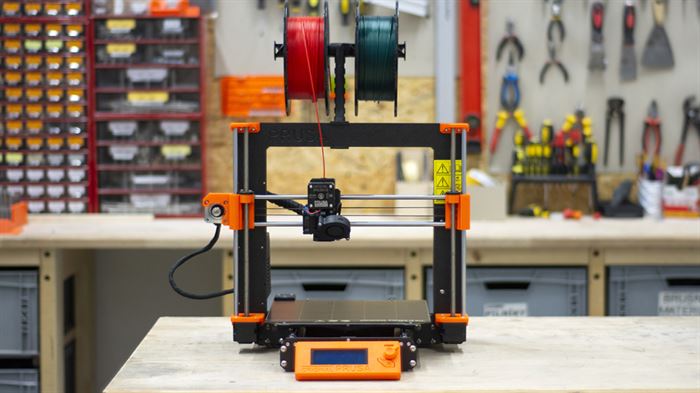
Key Features
- This is an open-source printer
- It supports connectivity with USB, SD card, Bluetooth, Ethernet, etc.
- It is supportive of both usual and rare filaments.
- It uses the Pinda-2 probe that automates the bed levelling process.
- It offers a print recovery facility after unexpected power loss.
- Prusa I3 MK3 consists of “2130 drivers” that ensure fast printing speed.
- A magnetic heated bed that is manufactured through PEI surface and speed steel.
- It uses cutting-edge technology to reduce noise during printing.
- Aluminium extrusion keeps the body robust.
- It is compatible with cloud printing.
Now, a brief discussion about the basic features of Prusa 3D printers is given for your convenience. Let’s have a look.
High-Quality Materials
Prusa printers are compatible with LCD control screens, SD cards, and controllers. Their materials are supportive of the cutting-edge process that keeps these printers almost quiet while printing.
Smooth Printing
Prusa 3D printers contain metal head ends. It prevents melting and deformation of PTFE tubes while printing high-temperature materials and PETG. Besides, jamming occurs during printing because of the metal head ends.
Moreover, a thermal runaway protects the materials from overheating during excessive thermal pressures, just like a thermal printer. That’s why Prusa ensures safe 3D printing to a large extent.
Frequent Updates
The firmware of Prusa I3 MK3 normally changes on a regular basis. This keeps the user updated with modern 3D printing features.
Print Speed
The print speed of a Prusa printer attracts consumers a lot. We can say from our first-hand experience that its print speed on low and high-volume printing is amazing. Its maximum print speed is 200 mm/s.
Connectivity
3D printers of Prusa are compatible with WiFi, USB, Ethernet, SD cards, etc. This feature improves their usability to a great extent.
Versatility Of Filament
Prusa 3D printers support versatile filaments. The most used filament types are
- PLA
- ABS
- PET
- Flex PP
- Laywood
- Nylon
- Polycarbonate.
These filaments act outstandingly to make the printing fast.
Low Noise
Prusa I3 MK3’s average intensity level is 50dB. It is almost the same as average rainfall. That means its operation is noise-free. That’s quite impressive, isn’t it?
Print Quality
The print resolution of photos delivered by Prusa 3D printers is commendable. This is more than 300 DPI concerning different models.
Price
Its price range is high. That’s why it is not beneficial for beginners. You can find this printer at prices ranging from $750-$999.
You can check Amazon for its costs.
Pros And Cons Of Prusa 3D Printer
Pros
- Excellent print quality
- Impressive designs
- High print speed
- Noise-free printing
- Safe
- Supportive of large-scale printing
- Automation in bed levelling
- Integrated with PrusaSlicker
- Quick removal of prints
- Compatible with removable heat beds
Cons
- Comparatively costly.
- High default setting density
- Not cost-effective for low-volume printing or hobbyists.
Best Prusa 3D Printer
- Prusa I3 MK3S
- Prusa Mini+
Head-to-Head specifications comparisons
| Comparison Factor | Ender 3 3D printer | Prusa 3D Printer |
| Noise | Loud air flow | Almost soundless |
| Printing Area (cm) | 222225 | 252120 |
| Display | Graphic | Textual |
| Printer Weight | 8.6 Kg | >10 Kg |
| Printer Size | 440410465 mm | 450420465 mm |
| X-Axis Dimensions | V-slot wheelsTiming beltNema17 Stepper2020 Aluminium Extrusion | Timing beltNema17 StepperLinear bearing8mm rod |
| Y-Axis Dimensions | V-slot wheelsTiming beltNema17 Stepper4040 Aluminium Extrusion | Timing beltNema17 StepperLinear bearingPlastic holders Zip tie8mm rod (double) |
| Z-Axis Dimensions | 3-3 V-slot wheels 2020 Aluminium extrusionT8 screw (Single side)Stepper motor | 8mm rod, stepper motor, T8 screw on both sides |
| Print Resolution | <300 DPI | >300 |
| Nozzle Temperature | 255⁰C | 300⁰C |
| Maximum Travel Speed | 180 mm/s | 200 mm/s |
| Connectivity | USB, SD card | SD card, USB, WiFi, Ethernet |
| Compatible Operating System | Windows, macOS | Windows, macOS |
| User Interface | Colour | Monochrome |
| Hotbed Materials | Carborundum glass | PEI spring sheet |
| Flexibility | Moderate | High |
| Hotbed Temperature | 100⁰C | 120⁰C |
| Layer Thickness (mm) | 0.1-0.4 | 0.05-0.35 |
| Bed Levelling | Manual | Automated |
| Extruder | Bowden | Direct Drive |
| Filament | PLA, PETG, TPU | PLA, ABS, PET, Flex PP, Laywood |
| Print Speed | 60-180 mm/s | 200 mm/s |
| Price | $150-$260 | $750-$999 |
| Print Technology | FDM | FDM |
| Nozzle Diameter | 0.4mm | 0.4mm |
So, still confused?
We think now you will be able to make a proper decision.
Final Verdict
While comparing Prusa 3D Printer Vs Ender 3, you can find that Prusa is more accessible and provides better functional properties than Ender. If you don’t have any budget constraints and intend to upgrade 3D printing projects, we think you should go for a Prusa 3D printer.
We hope this article can help you think neutrally and focus on your printing preferences. If you have any queries about modern 3D printers, contact us at any time.
Happy printing.
FAQs
- How Big Is The Prusa I3 MK3s+?
The Prusa I3 MK3s+ printer dimension is 420420380 mm in X-Y-Z directions, respectively. Its average weight is around 7-8 Kg.
- Which Prusa should I Buy?
Prusa I3 MK3S is the best 3D printer among all printers of the Prusa series. Its excellent print quality and fantastic print speed make it a perfect choice for beginners and professionals. Besides, its price-to-performance ratio is user-friendly.
- What Is Ender 3 A Clone Of?
Ender 3 3D printers’ most popular clones include
- Geetech A10
- Tronxy XY-2
- Longer LK4
- Alfawise U30.
